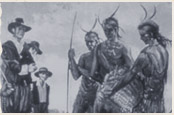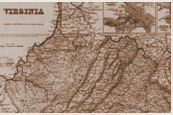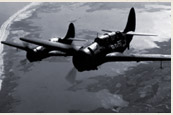The U-Boat War: Cartoon 1
Rutland (Vermont) Public Schools: World War I Cartoons
The U-Boat War: Cartoon 2
Rutland (Vermont) Public Schools: World War I Cartoons
The U-Boat War: Cartoon 3
Rutland (Vermont) Public Schools: World War I Cartoons
The U-Boat War: Cartoon 4
Rutland (Vermont) Public Schools: World War I Cartoons
Description: These political cartoons depict submarine warfare issues of World War I from three perspectives: Great Britain, Germany, and the United States. Analysis and discussion of the cartoons' messages encourage students to understand the significance of U-Boat attacks in undermining American determination to remain neutral.
Teaching Tips:
"Do Now" Suggestion
- Divide the class into four groups. If classroom computers are not available, provide each group with a copy of one of the political cartoons. Have them consider the following questions, and be prepared to defend their discoveries and analysis to the rest of the class: a) Is there anything in the cartoon image (including margin notations) that indicates which country it proceeds from? b) What point is the cartoon trying to make? c) How successfully does it convey its point? Historical background note: In order to understand Cartoon #2, students will need to know that the commonly-used title of the German national anthem, "Deutschland ueber Alles," translated means "Germany Over All." The real name of the German National Anthem is actually "Das Lied der Deutschen," but the song is often called "Deutschland ueber Alles" because those are the opening words of the first stanza. The expression "over all," however, refers not to the conquest of other countries but rather to a call for all Germans to abandon their concept of being a subject or citizen of this or that principality or region (such as Bavaria or Prussia) and to realize the common bond they had with one another by simply being German. The teacher may choose to use the Socratic method to see if any students who may be taking German can volunteer this background; if not, students may simply be informed of it.
- The above "Do Now" activity is a good way to get students thinking about the way political cartoons use symbols and language to convey messages concerning historical events. After students have examined these cartoons, the teacher can ask them to create their own cartoons (in groups or alone), which focus on the United States involvement in WWI. Possible suggestions for students: Zimmerman telegram and the February Revolution in Russia.



